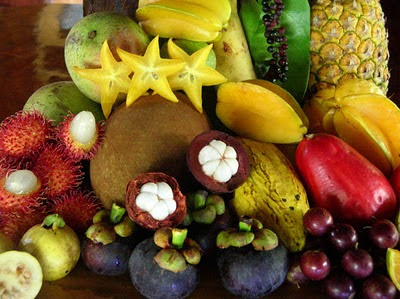Most physical scientists really don't know hardly anything about biology. Chemists take physics and math, physicists take chemistry and math, but most of them, with the exception of biochemists, take no biology at all, and if they do take biology, it's always at the cellular-molecular level and from a reductionist perspective, so no surprise that few chemists know much about the synthetic parts of biology. Here's a couple of excerpts from an interview with
a YEC (young Earth creationist) who's a chemist. What about the contrary evidence from scientific dating methods?"There are always assumptions behind dating methods. They're not infallible. They can be made to point to a young Earth, as well as an old Earth.
The evidence is not what people think. For example, people think that carbon 14 dating proves millions of years, but carbon 14 dating itself argues against millions of years."Wow! Now remember, he's a chemist. First he makes "assumptions" sound like 18 impossible things you have to believe before breakfast, but the assumptions of radioactive dating methods can be and have been tested, i.e., rates of decay and their constancy under different environmental conditions. For a chemist to make that statement about carbon 14 dating they either have to be a really pathetic chemist or a bloody liar. Carbon 14 can only date relatively young things because of its rapid decay rate, so beyond 50,000 years carbon 14 dating just doesn't work, and no credible scientist would claim it did. You want to age charcoal from an archaeological site in North America? Fine. Age of the Earth? Millions of years? Ridiculous!
What do you believe are the chief flaws in the theory?"First, the origin of first life, chemical evolution, makes no sense at all."This reminds the Phactor of engaging a similar YEC chemist in a discussion/debate about 20 years ago, and he said almost the same thing, and to demonstrate his case, and what is meant by that sentence, he dumps a hand full of paper clips into a can, shakes it (to add energy), and then dumps out the contents, still just a bunch of paper clips, and declares, "No amount of time or energy can add order or information to these paper clips and it's just like that with chemistry. Elements don't combine at random to make something organized."
In response, the Phactor borrowed his demonstration, and asked him, "Are all atoms, all molecules the same shape and size?" "OK rhetorical question because everyone knows that they are different." "So let's say the basic paper clip is carbon." "Well, we know that life is also composed of hydrogen, oxygen, nitrogen, and phosphorous, different elements with different properties (an aside - It's on your periodic table.) but our chemist only started out with one element which isn't realistic chemistry at all." And after bending paper clips into different shapes, some at right angles, some straightened into an S, and so on to represent different elements, dumped them back into the can, gave it a few shakes, and out pours a tangle of paper clips. "Now there's some organization." "Nothing awesome but maybe useful in some way, to hang something or to wear as a bracelet." "Now imagine you have thousands of such entities, each a bit different, but now the most useful organizations will produce the most copies of themselves." "That's natural selection, Darwin's contribution to biology, and it's through generations of such reproductin, variation, and selection that more useful organizations appear." "Now the only question to ask our chemist is simple." "Is he really such a poor chemist that he doesn't understand this, or is he deliberately trying to deceive you." He left his demonstration and didn't stay around to answer questions at the end. Even the brief responses in this recent interview demonstrate that nothing at all has changed in the unscientific world of YEC chemists.
HT to
Dispatches from the Creation wars.






















